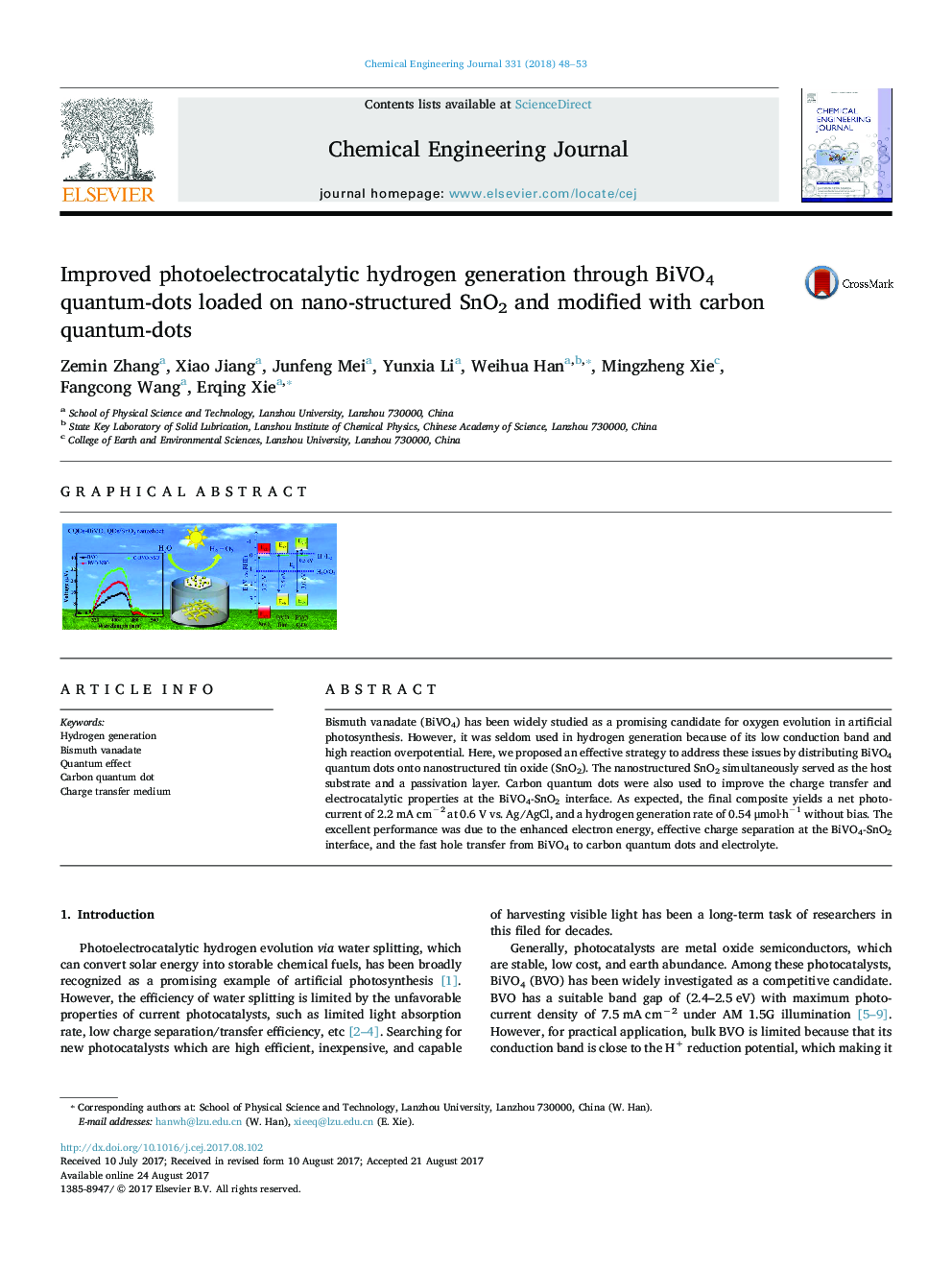| کد مقاله | کد نشریه | سال انتشار | مقاله انگلیسی | نسخه تمام متن |
|---|---|---|---|---|
| 4762840 | 1422947 | 2018 | 6 صفحه PDF | دانلود رایگان |

- BiVO4 QDs with negative conduction band than water reduction potential to generate hydrogen.
- Nanostructured SnO2 serves as the host substrate and a passivation layer for QDs deposition.
- Heterojunction formed at BiVO4/SnO2 interface could inhibit the charge recombination.
- Carbon QDs work as the charge transfer medium and electrocatalyst for water splitting.
Bismuth vanadate (BiVO4) has been widely studied as a promising candidate for oxygen evolution in artificial photosynthesis. However, it was seldom used in hydrogen generation because of its low conduction band and high reaction overpotential. Here, we proposed an effective strategy to address these issues by distributing BiVO4 quantum dots onto nanostructured tin oxide (SnO2). The nanostructured SnO2 simultaneously served as the host substrate and a passivation layer. Carbon quantum dots were also used to improve the charge transfer and electrocatalytic properties at the BiVO4-SnO2 interface. As expected, the final composite yields a net photocurrent of 2.2 mA cmâ2 at 0.6 V vs. Ag/AgCl, and a hydrogen generation rate of 0.54 μmol·hâ1 without bias. The excellent performance was due to the enhanced electron energy, effective charge separation at the BiVO4-SnO2 interface, and the fast hole transfer from BiVO4 to carbon quantum dots and electrolyte.
145
Journal: Chemical Engineering Journal - Volume 331, 1 January 2018, Pages 48-53